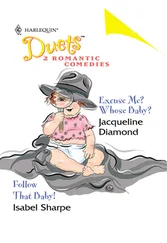When, four years later, he convinced Pilar to explore the cave with him, she invited Matteo to come along. Matteo carried the pole of a broken broom to use against any bats that dared to swoop too close to them, and to smash the scorpions he predicted would be nesting in the crevices.
Matteo was a bully and a jughead, and Guy couldn’t hide his resentment when the boy proved right about the scorpions. The children saw them glistening red against the brown of sand and dust, their pincers waving, just inside the entrance. Guy tried to convince Pilar to continue past them, but she wouldn’t budge, not until Matteo took charge. He attacked with his broom, grinding the end of the pole against the nest. When he was done, the scorpions had been smashed to confetti.
The children pressed forward—Guy first, carrying the lantern, then Pilar, then Matteo. The dome of the cave gave them ample room, enough to stand at their full height, except where clusters of waxen stalactites hung low. The steady drip-drop of seepage echoed through the hollow space. In the rear of the cave, they saw evidence that other people had been there before them. Pilar found a piece of hammered metal that looked like a spearhead with the sharp tip broken off. Guy found a short length of rope that turned out to be made of leather.
They had grown up hearing legends about pirates who had buried treasures in caves and never returned; their three young hearts pounded hard at the thought that they would find a chest full of gold. They kicked and scraped at the floor, but the limestone was hard beneath the crusted sand. Disappointment replaced hopefulness as their efforts resulted in nothing but bloody knuckles and bruised toes. What good was a cave if it didn’t contain gold! Matteo swung the broomstick, knocking Guy hard on the knee—on purpose, Guy was sure, though Matteo claimed it was an accident. Guy held back his tears so as not to reveal himself to be a coward in front of Pilar. Matteo’s fury grew, his greed insatiable. He banged the broom against the wall, releasing a loud stream of crumbling stone. Guy thought the cave was collapsing around them, and he threw his arms around Pilar to protect her. His lips touched the back of her soft neck. Even as he cursed himself for putting his beloved in danger, he believed he would die happy if he died right there, with Pilar in his arms.
She wasn’t ready to die and pushed him away. The limestone stayed intact above them, and Matteo, who gave off a stink of rotten eggs, howled with laughter at Guy’s fearfulness. Guy was pleased when Pilar told her brother to shut up, and then he was brokenhearted when she said she wanted to leave that stupid cave and never return.
Guy lifted the lantern, preparing to light the way back toward the entrance. But then, behind a cloud of settling dust, he saw a new hole in the cave wall, opening to a separate space. He held the lantern closer to the hole and caught sight of a smear of rosy color on the slanting surface of an interior wall: a secret room—the perfect place for pirates to leave their treasure! He let Pilar hold the lantern so she could see for herself. Matteo pushed in front of her and began clawing at the hole, Guy joined him, and soon they had an entrance wide enough for the three children to squeeze through one after another.
The chamber where they found themselves had a vaguely rectangular shape, with walls slanting to a peak. The low ceiling was free of stalactites, the floor as smooth as polished marble. In the light from the lantern, the ochre color Guy had seen through the aperture slowly gained definition, revealing identifiable shapes. Circles became eyes, the joint in the stone formed a nose. Lines connected over a boss of rock into a hulking body of a bull. On the wall ahead of the bull were forms stained red, shaded with chalky white and yellow, with lyre-shaped horns, their legs tapering to delicate black hooves; in these shapes the children recognized a herd of ibex. Overhead, wings with apricot-colored rosettes belonged to a bird in flight, with a snake held in its beak.
There must have been fifty or more figures painted on the walls, preserved in the deep chamber from the destruction of time. Some of the animals bore scratched symbols on their hindquarters—a form of ancient writing, Guy assumed. What was the story they were telling? How much he would have given to know.
I slowly came to understand that this was the great book Guy Fraiser had wanted to tell me about, a limestone book made of symbols and illustrations that were impossible to decipher with any certainty, yet were rich with infinite meaning.
The children’s awed silence gave way to cries of astonishment. Even brutish Matteo appreciated the import of their discovery. They felt themselves to be in the presence of something more sacred than the saint’s tooth encased in a gold reliquary in the village church. These ancient pictures were older than any saint. They were as old as Adam and Eve. Maybe they had been made by Adam and Eve themselves, and they told the story of Paradise! The children had found their treasure, all right, and they wanted the world to know. They took their amazement out of the decorated chamber, out through the long passage of the cave into the open air, where they whistled and hooted with the news of their discovery as they scrambled down the slope.
“It is never enough,” said Guy, sipping the tea that had grown lukewarm while he was talking, “to experience the magnificence of a beautiful thing that has been lovingly made. We must share the experience. We must cry out with joy, sound the bell, invite our friends to see what we saw and feel what we felt. Delight matters little until it is communicated.”
I was picturing the illustrations Guy had described, imagining myself in his place, feeling the thrill he had felt. I was increasingly hopeful that I could persuade him to tell me where the cave was located so I could visit it myself one day. I was dismayed when he reached for his coat and announced that he had a train to catch. Where he intended to go next, he would not say.
He asked me to call him a taxi, and while we were waiting he finished his story in some haste. He explained that after he and Pilar and Matteo had roused the drowsy villagers from their siesta with their shouting, a crowd of dozens made their way back to the cave. Everybody who saw the drawings was appropriately impressed. Soon word of the discovery spread across the region. Someone set up a booth and began charging an entrance fee. Archeologists came to investigate and published papers arguing about the age of the paintings. Claims were made regarding the ownership of the cave, bribes were exchanged, and magistrates were accused of corruption.
Then the war broke out, and no one cared anymore about primitive paintings on the walls of a cave. At the age of just sixteen, Guy joined the Resistance and was charged with the task of carrying messages across the border. He went into hiding when he learned the Germans were looking for him.
“For two years,” he said with a melancholy chuckle, “I traveled from town to town disguised as a girl and protected by sympathetic families, who pretended I was their sister and daughter.”
Just then an aide poked her head into the room and announced that the taxi had arrived. Guy slid his arms into the sleeves of his overcoat and adjusted his bow tie.
“There isn’t much more to tell,” he said as I accompanied him down the hall. For the first time, I detected a note of bitterness in his voice.
It occurred to me only after he had been driven away in the taxi that he was spending his remaining years traveling around the world and repeating the same story over and over, as if by telling he could revive what had been lost, a quixotic effort he must have known would always fail.
Читать дальше












